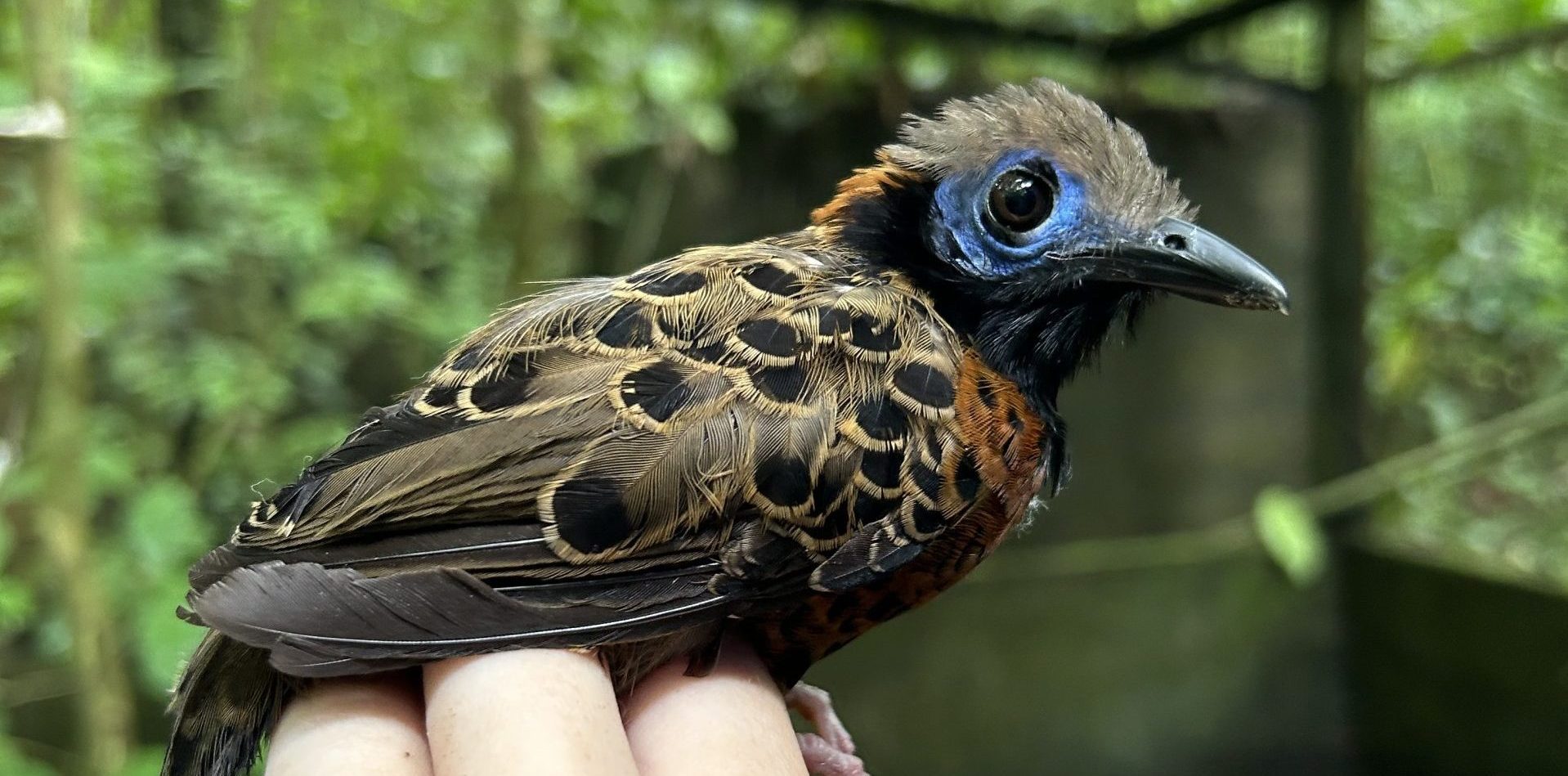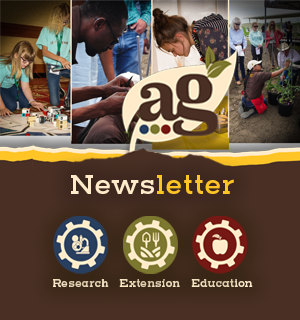Table of Contents
In Wyoming, “trampling” brings to mind an angry bull — but in the tropical rainforest of Panama, thousands of small insects trample across the forest floor, changing the entire dynamic of the ecosystem in their wake.
Eciton burchellii is a species of army ant that marches across the rainforest in swarms up to 30 meters across, sending prey species fleeing in every direction. The unfortunate prey is snatched up not just by the ants themselves, but by hordes of birds that follow swarms around in hopes of an easy lunch.
But just how do birds interact with these intense little insects? Undergraduates Liz Howard and Bri Agenbroad and graduate students Michael Castaño Diaz and Mary De Aquino set out to learn more about bird-ant interactions in Panama’s Soberanía National Park.
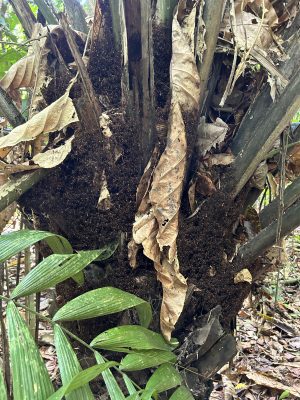
Howard, Agenbroad, and De Aquino are part of Corey Tarwater’s avian ecology and behavior lab. Tarwater is an associate professor in the University of Wyoming Department of Zoology and Physiology. Castaño Diaz is part of UW’s behavioral complexity lab, run by assistant research scientist Patrick Kelley of the Department of Zoology and Physiology. The students’ research is primarily funded by a National Science Foundation grant. Fieldwork has been ongoing for several years and is supported by field technicians from all over the world.
Background: Bivouacs and birds
Since army ants cover a lot of ground, they create their own mobile homes. Every night, ants form a bivouac, which is a nest created with the worker ants’ bodies to protect the queen, eggs, and larvae. Even when ants are swarming, part of the colony always remains behind in the bivouac.
Across the neotropics, 462 bird species have been recorded attending army ant swarms. Up to 20 species and 60 individuals have been spotted at ant swarm at the same time. Some birds get almost all their food by following around army ant swarms; others visit only when it’s convenient.
During their fieldwork in Panama, the students looked for lines of ants to track down two to five bivouacs at the beginning of each week. In the morning, they return to the bivouac locations they marked the night before in order to observe and study the swarms.
Four (or more) research questions
Each of the four students is focusing on a specific research question.
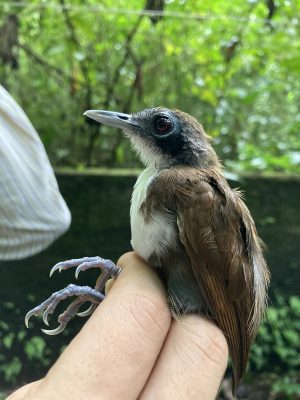
Agenbroad is studying how species compete for food during the maintenance phase, which is when the swarm is in full swing, charging across the landscape. Certain birds may show up to the swarm, but then be excluded from eating their fill. What allows one bird to successfully snatch up more prey than another, and what influences the overall level of competition at swarms?
De Aquino is also studying the maintenance phase, but her focus is on how bird species share resources at swarms, what roles different species play, and how these groups are impacted by species loss. For example, different species may target different kinds of prey, or different areas of the swarm. Some species might be aggressive antagonists, attacking other birds in the flock. If one of these species is removed, how will other birds divide up remaining prey?
Castaño Diaz is investigating the recruitment phase, or when birds are showing up to the swarm. He is examining how the presence or absence of certain species might influence who else attends. Certain bird species may be less likely to be present at the swarm if they hear a lot of antagonist birdcalls, for example. Castaño Diaz is also examining how birds find swarms, and in particular which birds check the bivouacs, and how often.
Finally, Howard is investigating the spatial distribution of birds, ants, and prey. In one of the first studies of army ant swarms, back in the 1970s, researchers predicted that dominant birds should be found in the area with the greatest amount of food, but no one has tested this idea. Howard is examining where in the swarm birds prefer to forage, and whether these patterns differ for different bird species. She’s also studying where the most prey is being flushed up and how different prey species flee from the swarms.
An understudied keystone species
Eciton burchellii is considered a keystone species. This means these ants have a disproportionate effect on the ecosystems around them, and their removal might send the whole system crashing down — like a keystone in a stone arch. “Today we have a lot of silent forests, because keystone species are disappearing or extirpated from that forest,” says Castaño Diaz.
In addition, the students’ research focuses on understanding how species interactions change the system as a whole. “If we focus on just one species, probably we won’t know its context,” says Castaño Diaz. “It’s not enough to just have a big forest. You have to understand and conserve the interactions between species to conserve ecosystem function.”
Though army ants are vital to the survival of many other species of birds, mammals, and even fish, they are understudied in comparison to temperate species. In fact, there are huge gaps in even basic information about many tropical species.
“Understanding how these ecosystems work now can prepare us to manage and protect them and the species within them,” Howard notes.
Overturning accepted knowledge
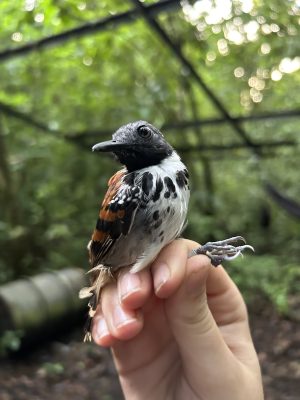
In the case of Eciton burchellii, the students are already beginning to see that some previous beliefs about ant swarms and birds may be off base. For example, while previous research claimed that the middle of the swarm was the best place for birds to forage, Howard’s research seems to indicate that birds are most likely to hang around the edges of the swarm, because there is more prey in these locations.
In addition, the students observed that ant swarming behaviors may fluctuate more often than previously thought. Army ants switch between an active phase, where they are nomadic and swarm every day, and a statary phase, where ants primarily keep their bivouac in one location. In the statary phase, ants may have reduced food needs and activity. Army ant literature claims that the active phase tends to last about two weeks, and the statary phase lasts about three weeks. The students found that while ants sometimes followed this pattern, sometimes each of these phases only lasted a few days. “It’s a great example of coming up with more questions as you’re trying to figure things out,” comments De Aquino.
The students have worked together to build on previous knowledge and answer questions about the army ants’ unique contributions to their habitat and interactions with their avian hanger-ons. To learn more about interactions between ants and birds, contact Tarwater at corey.tarwater@uwyo.edu.
This article was originally published in the 2024 issue of Reflections, the annual research magazine published by the UW College of Agriculture, Life Sciences and Natural Resources.



